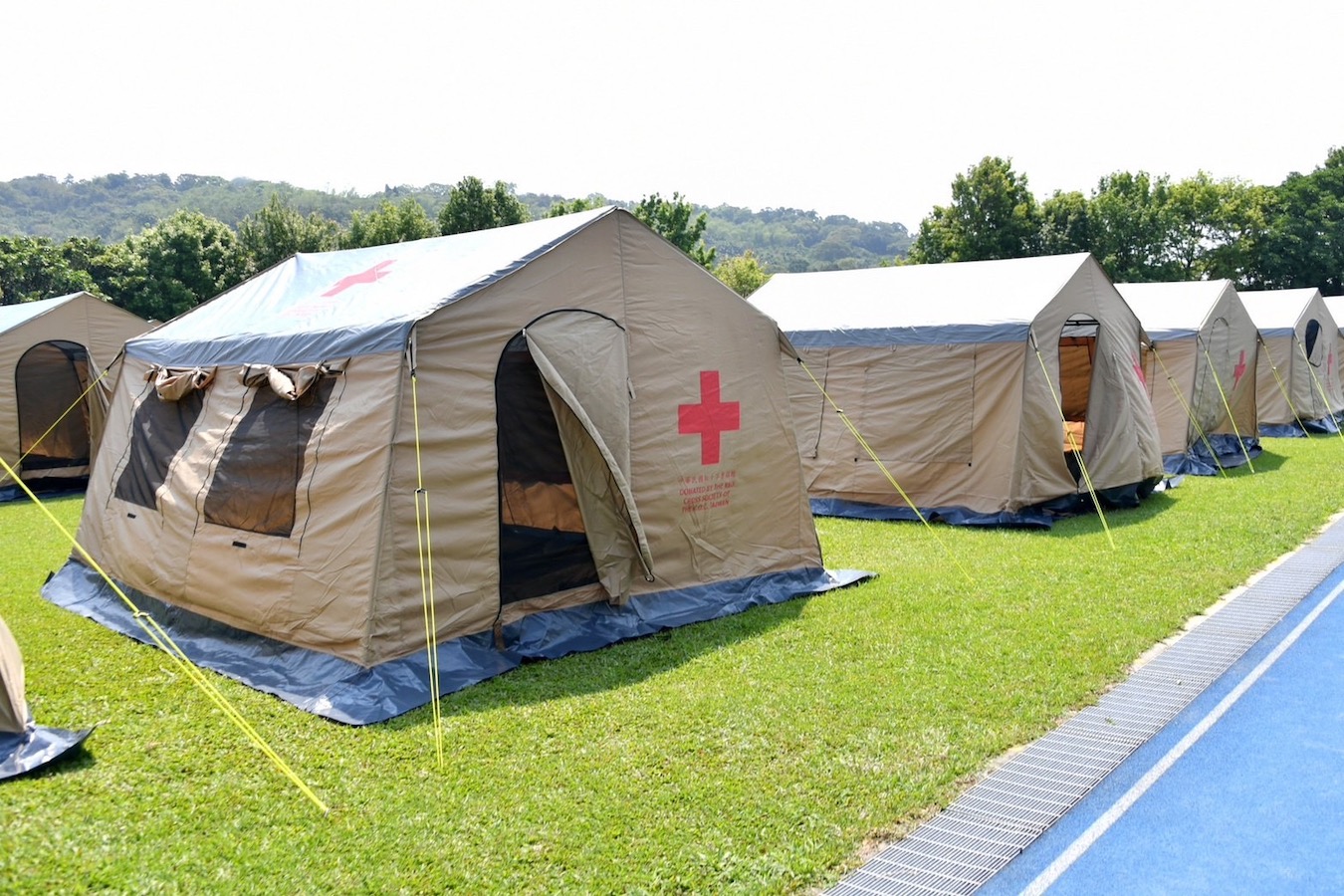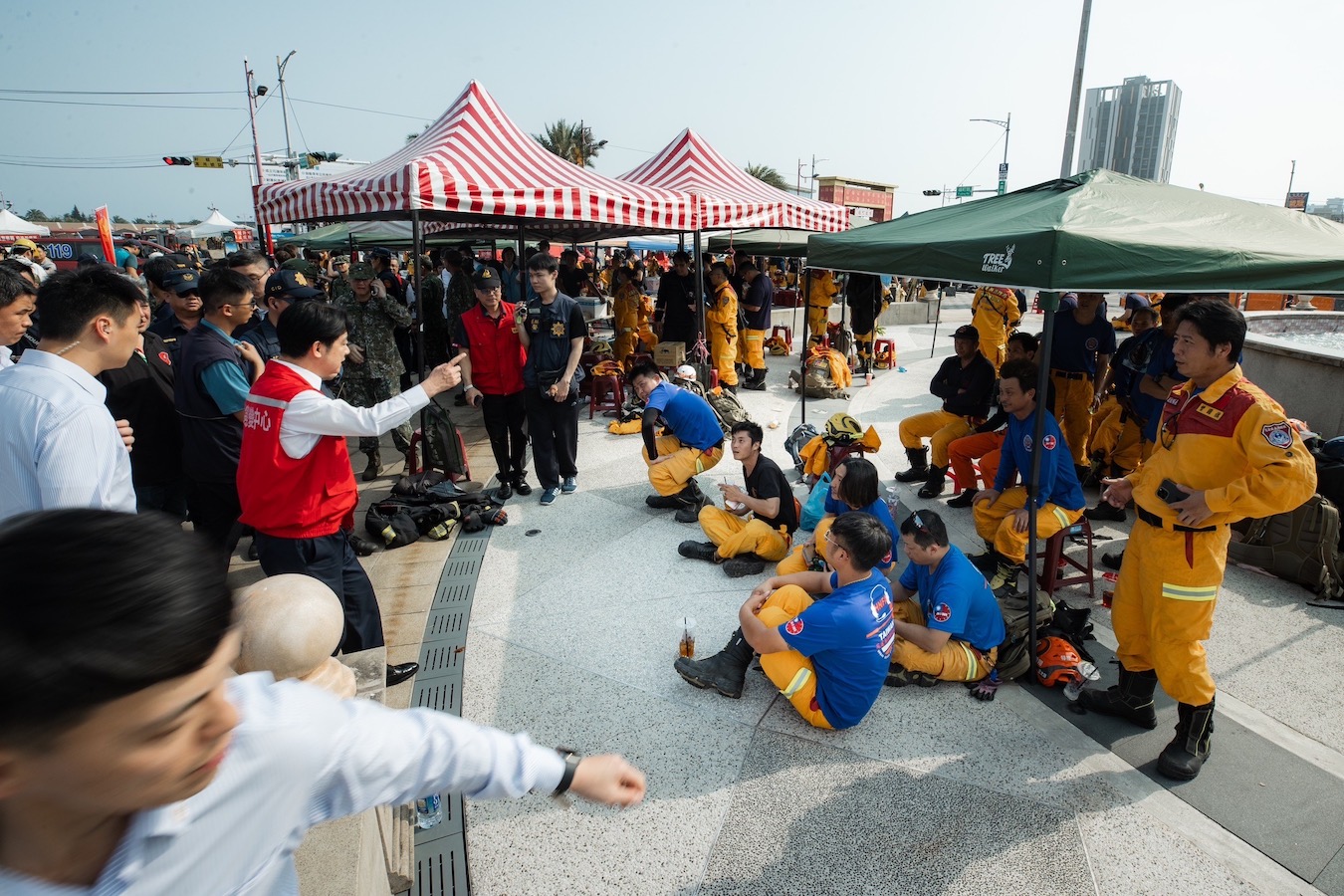by Brian Hioe
語言:
English
Photo Credit: Presidential Office/Flickr/CC BY 2.0
A 7.4 EARTHQUAKE that struck Taiwan on Tuesday, proving to be the largest earthquake in 25 years. The earthquake struck at 7:58 AM. Though a tsunami warning was issued after the earthquake, this was withdrawn not too long after.
The impact of the earthquake continues to be felt, with rescue efforts still underway. At press time, there have been 12 deaths, which largely occurred due to falling rocks or individuals trapped in buildings that collapsed. 16 are missing while 682 are trapped. Many of the individuals who are trapped are in tunnels. Individuals displaced from their homes are being housed in tents and other structures, with local governments opening temporary shelters. The central government deployed an emergency center in response to the earthquake.
The earthquake led to disruptions to public transport. Part of the Circular Line in New Taipei was damaged, while part of the Provincial Highway No. 8 between Taroko and Dayuling is closed for repairs. Part of the Suhua Highway between Heping and Su’ao has since been partially reopened.
 Emergency shelters for the affected. Photo credit: Executive Yuan/CC
Emergency shelters for the affected. Photo credit: Executive Yuan/CC
Even as international media reports often focused on that train service was disrupted, the effect was minimal. MRT systems in Taipei and Kaohsiung, for example, were closed for around an hour to check for damage, while the High-Speed Rail service dispatched some trains at 9 AM, one hour after the quake.
Likewise, repairs for disrupted cell phone bases are underway, with 80 damaged bases expected to be repaired by today. The Ministry of Digital Affairs have stressed that the construction of 700 satellite hotspots will be completed by 2024, something that would also prove useful infrastructure in the event of a Chinese invasion.
Though there was global concern about the potential impact on semiconductor manufacturing in Taiwan, TSMC and other companies have stressed that regular operations are on the way to resumption. Semiconductor manufacturing companies have long been cognizant of the potential disruption that the frequent seismic activity Taiwan sees could have to production.
A number of structures collapsed across Taiwan, with the iconic image of the disaster being a building that tilted over in Hualien. Many of the buildings that did were on the east coast of Taiwan, which historically is closer to the epicenter of earthquakes in Taiwan. Uneven development between central metropolises of Taiwan and more rural areas such as mountainous Hualien also means that it is more common for buildings there to collapse in the event of an earthquake. A fire also burned through a chemistry building at National Dong Hwa University after the earthquake, with firefighters unable to take action due to the chemicals. Yet the damage occurred across Taiwan, often in areas that are historically socioeconomically disprivileged. As such, damaged and evacuated buildings included in Taipei’s Wanhua District in the Nanjichang borough, which is historically the poorest district of Taipei.
The central and local governments are collecting donations for relief efforts. A number of industry groups have also announced donations. More than 30 million NT has been donated by way of local accounts. The central government has pledged 300 million NT for reconstruction efforts. Some expressions of support came from abroad, such as from members of US Congress and donations of 1 million USD for reconstruction from Japan.
Some stories from the earthquake have caught the public imagination, such as the death of a female teacher who initially escaped her collapsing building but went back for her cat. Or a video of nurses protecting babies during the earthquake.
There have been criticisms that the earthquake alert system was not triggered for some parts of Taiwan, due to the algorithm that manages this. As such, there have been calls for reevaluating how such alerts are issued.
The government stressed that Taiwan’s Reactor No. 3 was not affected by the earthquake. As one of the longstanding concerns in Taiwan over nuclear energy is the potential effect from seismic activity, potentially leading to incidents such as the 2011 Fukushima disaster in Japan, one expects there to be a renewal of such calls for caution of nuclear energy after the earthquake.
Compared to the 921 earthquake that occurred in 1999, killing over 2,400, the casualties that occurred this time were limited. Many have attributed the lack of casualties to the changes to building codes that were made in the wake of the earthquake, to find structures in danger from seismic activity, and to build sturdier structures going forward.
One notes that the narrative on Taiwan shifted several days after the earthquake in international media reporting. Bemoaning of the potential damage to infrastructure and semiconductor manufacturing eventually shifted to praise of Taiwan’s resilience, in that a severe earthquake led to relatively limited disruption for most of Taiwan.
 Photo credit: Presidential Office/Flickr/CC BY 2.0
Photo credit: Presidential Office/Flickr/CC BY 2.0
This perhaps proves similar to international accolades for Taiwan regarding its COVID-19 response. To this extent, one notes the learning curve for Taiwan in the past twenty years, in that part of Taiwan’s effective COVID-19 response was attributed to the lessons it learned from the 2003 SARS epidemic and traumatic events such as the lockdown of the Heping Hospital.
The number of casualties to date has proved similar to other earthquakes that have hit Taiwan, such as the February 2016 earthquake that struck Tainan and the February 2018 earthquake that struck Hualien. But there was not such international coverage of Taiwan at the time. In this way, the earthquake also reflects to what extent international perceptions of Taiwan have changed in past years, with greater attention to the crucial role that Taiwan plays in global supply chains and the dangers that Taiwan faces from a Chinese invasion.
The People’s Liberation Army has reduced activity around Taiwan in past days, likely in response to criticisms of its continuing to militarily threaten Taiwan in the face of disaster. The Chinese government has offered assistance, as a way to try and show munificence to Taiwan, but this has been declined. After all, such aid would not come without preconditions. Indeed, in response to the earthquake, Chinese social media platform Weibo issued guidelines for netizens not to mock the earthquake. Indeed, the Taiwanese government has criticized the Chinese government for thanking the world for global support for Taiwan, as a move aimed at reinforcing its claims over Taiwan.

